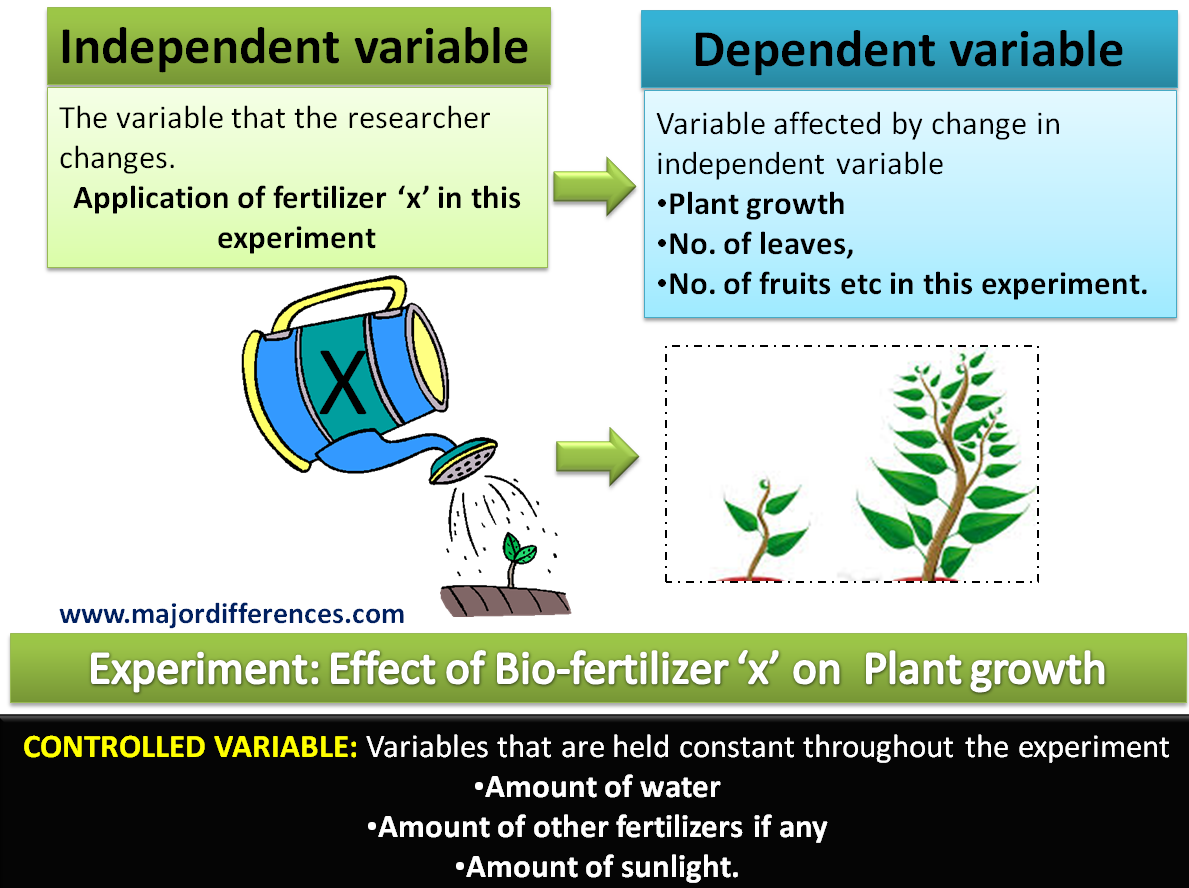Understanding Controlled Variables: The Key To Scientific Experiments
What is a controlled variable? In the realm of scientific experiments, understanding the concept of controlled variables is crucial for obtaining accurate and reliable results. Controlled variables are those factors that are kept constant throughout an experiment to ensure that the changes observed in the dependent variable are solely due to the manipulation of the independent variable. In this article, we will delve deep into the definition, importance, and examples of controlled variables, providing a comprehensive guide for students, educators, and anyone interested in the scientific method.
The significance of controlled variables cannot be overstated. They form the backbone of any scientific experiment, allowing researchers to isolate the effects of specific variables and draw valid conclusions. Without controlled variables, it would be challenging to determine whether the outcomes of an experiment were influenced by external factors or by the independent variable being tested. This article will explore various scenarios where controlled variables play a critical role in enhancing the validity of scientific findings.
Additionally, we will provide a structured overview of controlled variables, discussing their characteristics, examples, and how they differ from other types of variables in an experiment. Whether you are a student looking to improve your understanding of the scientific method or an educator seeking resources to teach this concept, this article will serve as a valuable reference.
Table of Contents
- 1. Definition of Controlled Variable
- 2. Importance of Controlled Variables
- 3. Examples of Controlled Variables
- 4. Characteristics of Controlled Variables
- 5. Differences Between Controlled, Independent, and Dependent Variables
- 6. Application of Controlled Variables in Experiments
- 7. Common Mistakes in Managing Controlled Variables
- 8. Conclusion
1. Definition of Controlled Variable
A controlled variable, also known as a constant variable, is any factor in an experiment that is kept the same throughout all trials. This ensures that the experiment remains fair and that the results are valid. For example, if a scientist is testing the effect of different fertilizers on plant growth, they may keep the amount of sunlight, water, and soil type constant while varying the type of fertilizer used.
2. Importance of Controlled Variables
The importance of controlled variables lies in their ability to enhance the reliability of experimental results. Here are several reasons why controlled variables are essential:
- Reduces Confounding Variables: By keeping certain factors constant, researchers can minimize the impact of other variables that could skew the results.
- Increases Validity: Experiments that properly manage controlled variables tend to produce more valid results that can be trusted.
- Facilitates Replication: When controlled variables are clearly defined, it becomes easier for other researchers to replicate the study, a critical aspect of scientific research.
3. Examples of Controlled Variables
To illustrate the concept of controlled variables, consider the following examples:
- Plant Growth Experiment: In an experiment to test the effect of light on plant growth, the type of plant, soil, and amount of water are controlled variables.
- Cooking Temperature: When testing different cooking times for a specific dish, the oven temperature should be a controlled variable.
- Medication Testing: In clinical trials for new medications, factors such as age, gender, and diet may be controlled to isolate the effect of the medication itself.
4. Characteristics of Controlled Variables
Controlled variables share several key characteristics:
- Consistency: They remain unchanged throughout the experiment.
- Relevance: They are directly related to the independent variable being tested.
- Measurable: They can be quantified or qualitatively assessed to ensure they are kept constant.
5. Differences Between Controlled, Independent, and Dependent Variables
Understanding the differences between these types of variables is crucial for designing effective experiments:
- Independent Variable: The variable that is changed or manipulated by the researcher.
- Dependent Variable: The variable that is measured or observed in response to changes in the independent variable.
- Controlled Variable: The factors that are kept constant to ensure a fair test.
6. Application of Controlled Variables in Experiments
Controlled variables are applied in various fields of study including biology, chemistry, physics, and psychology. Here’s how they are utilized in different types of experiments:
Biological Experiments
In biological studies, such as those involving plant growth or animal behavior, controlled variables can include environmental conditions like temperature, humidity, and light exposure.
Chemical Reactions
In chemistry, when investigating reaction rates, controlled variables may include the concentration of reactants, temperature, and pressure.
Psychological Studies
In psychological experiments, factors such as participant demographics, setting, and time of day can be controlled to isolate the effects of the treatment being tested.
7. Common Mistakes in Managing Controlled Variables
Researchers often make several common mistakes when it comes to controlling variables:
- Failing to identify all potential controlled variables.
- Inconsistently applying controlled variables across trials.
- Overlooking the impact of uncontrolled variables.
8. Conclusion
In conclusion, controlled variables are a fundamental aspect of scientific experiments that help ensure the validity and reliability of research findings. By maintaining consistency in the factors that are not being tested, researchers can confidently attribute any observed changes in the dependent variable to the manipulation of the independent variable. Understanding and effectively managing controlled variables is essential for anyone engaged in scientific inquiry.
If you found this article helpful, please leave a comment below, share it with friends, or explore other articles on our site. Your engagement helps us create more valuable content for you!
Article Recommendations
- What Happened To Cinna In The Hunger Games
- Minor Tire And Wheel
- Anant Real Name
- Cassie Ventura Parents Nationality
- Lg Smart Grid Wifi Refrigerator
- Punaluu Black Sand Beach Hawaii
- News 4 San Antonio
- One Piece Season 11
- Michael C Hall
- Cave Creek Az


